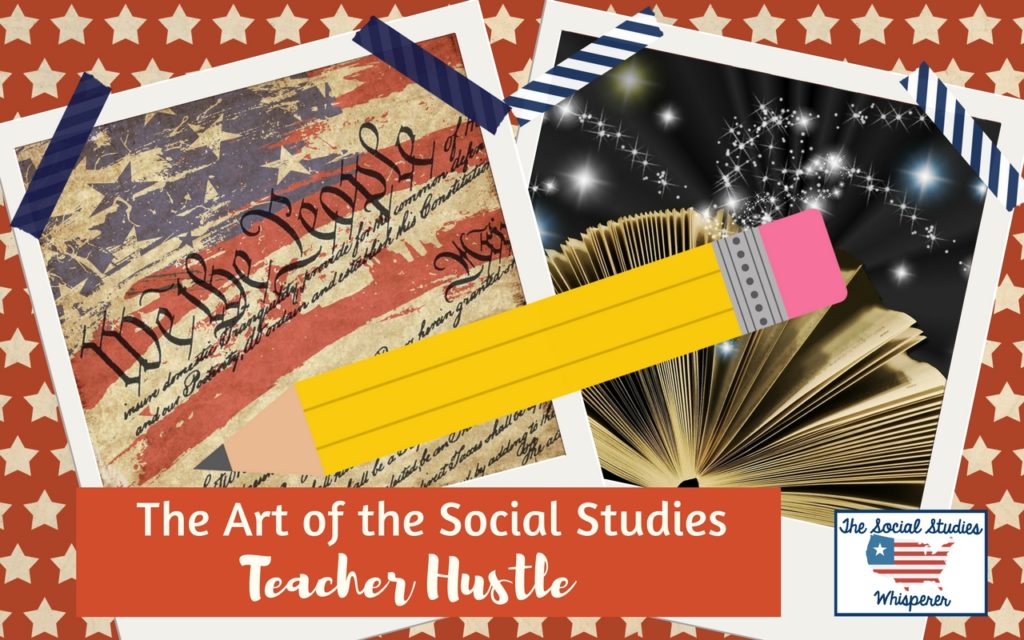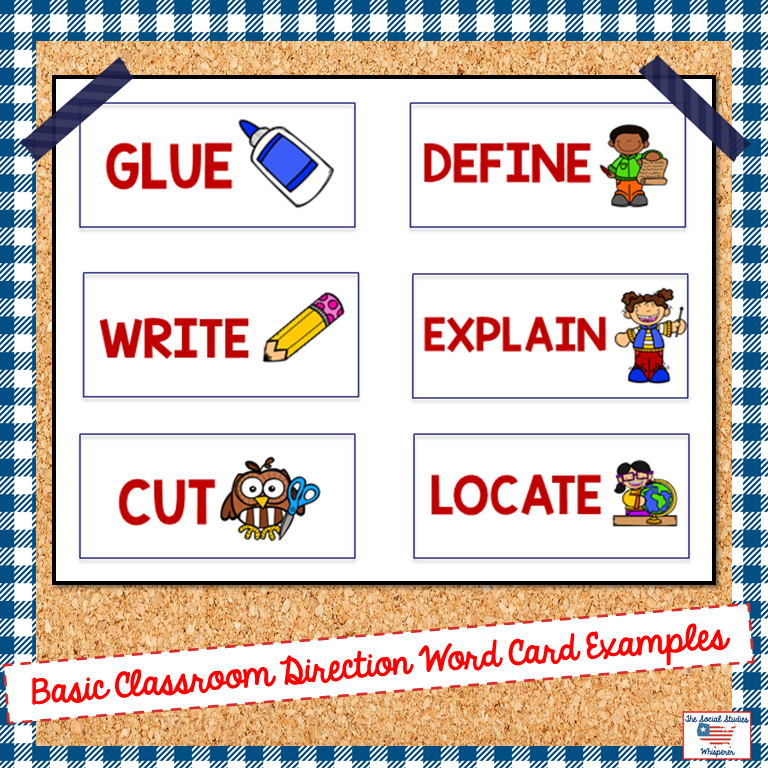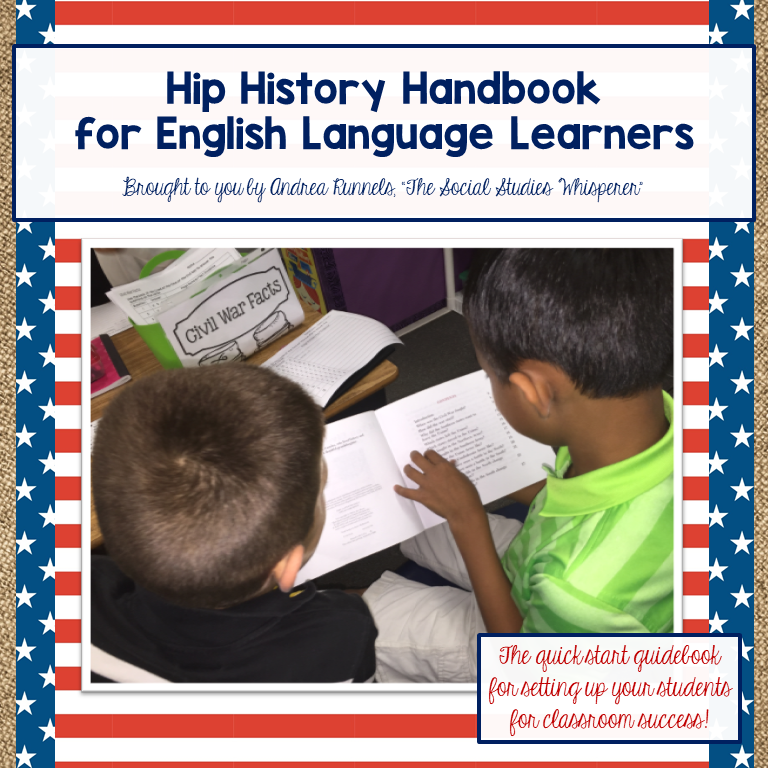The next hack is making sure that it is super clear what the topic of a lesson is. That means for the kiddos. Have things posted in kid-friendly language. As someone who was born with the gift of gab, sometimes I know I put too much verbiage around what I’m trying to say. So I would have to be cognizant of simplifying things for my ELLs (um, and not talking a mile a minute).
So no matter what kind of razzle-dazzle thing you have to post per administration, make your own kid-friendly learning target for your English Language Learners and include key vocabulary words. Even if you have them on a word wall or detailed timeline post current key words again on the board. Yes, I was required to post technical sounding standards, Learning Targets, and/or “Essential Questions” depending on the school year and whatever “new fad” was going on. Is it just me or most of the time those were written in such a way that I could barely understand them let alone kiddos? Well, to combat that I always made sure I had a kid-friendly version of things posted as well.

Since naturally in a classroom you have a whole bunch of stuff posted, it’s helpful to have things simplified in one place to help kids stay focused on the topic. I liked to use Washi tape to lapel a spot on the board or strip magnets. You can see the strip magnets in the picture at the top of the post (black chevron in bottom corner of board), which came from a local school supply store or maybe School Girl Style. Not giving you the link to that site now because you will get totally distracted. And this isn’t a class décor post. Although that would be fun…
Write your topic very clearly in addition to all the “I Can” or whatever requirements you may have to post. I also used chart paper for this and I promise they did not look like the Picasso-quality Pinterest versions (#cantheynot). For example, simply write Civil War and every day give a reminder to kids where that time period falls into history in relation to now. This scaffolding will be helpful for all kids. They are so stuck in the digital age sometimes they can’t even fathom life 10 years ago, let alone 150+.
PS if you have read my “Art of the Social Studies Teacher Hustle” blog post then you know sometimes I like to start lessons by having kids guess what the topic is. Well yes, I just told you to post the topic on the board but my blog post says to make it a mystery. So what gives?? I made sure we weren’t too far into the lesson so that my ESOL kids have that subject or specific topic vocabulary at the beginning so they understand what’s going on. Or it is possible that you could discreetly tell them in advance. Or even slip them the answer on a post-it so they can be the one answering for once!

You may want to have a separate space where you post basic academic vocabulary words with a picture clue depending on the level of your students. This could be as simple as write, cut, color or higher-level words like define, infer, predict. Here are a few samples I whipped up for ya. These clip art images are from Creative Clips Check my teacher BFFs Teachers Pay Teachers and Pinterest for freebies.

Yes, it will take extra work on your part to create these and follow through but it is a small thing that will make a huge difference. Think about what an insurmountable task learning English must be to someone who isn’t a native speaker. Breaking it down into smaller chunks makes it more manageable. Set your ELLs up to succeed and you will be blown away by how much they soar!
It is also important to have academic language goals for your ESOL kids based on their WIDA level so include those as well and post them so classmates can help support each other. Your ELLs will not be working at the same pace so they should not have the same goals as the rest of the students in the class. These goals can also be called Language Objectives, a part of the SIOP (Sheltered Instruction Observation Protocol) model of instruction (links with more info included with Extra Resources).These objectives include an action verb from one of the four literacy domains (listening, speaking, reading, and writing), the topic, and what support is necessary. See examples below, which I wrote as “I CAN” statements.
Sample Language Objectives Incorporating S.S. Content Adapted from the SIOP Model
Listening
*I can act like I am working on an assembly line.
*I can categorize Civil War generals into Union or Confederate.
*I can label the United States on a map.
*I can point to my state on a globe.
*I can role play being a sharecropper.
Speaking
*I can describe what life was like in the trenches for soldiers during WWI.
*I can name the battle that was the “turning point of The Civil War.”
*I can share how I created a battlefield diorama.
*I can explain the causes of The Civil War.
*I can use vocabulary to describe this photo from The Great Depression.
Reading
*I can find examples of new technology used during WWII.
*I can read the paragraph about Pearl Harbor.
*I can preview the book about FDR by looking at pictures.
*I can make connections between Pink and Say and what I have learned in class.
*I can skim the passage about D-Day.
Writing
*I can write questions I have about The Tuskegee Airmen.
*I can record my feelings about the song Isle of Hope, Isle of Tears.
*I can edit my letter to a soldier for capitalization.
*I can state and justify my opinion about Woodrow Wilson dropping the atomic bomb on Hiroshima.
*I can list the countries who were part of the Allies during WWII.

Check out the rest of the blog series here:
- Introduction: https://www.thesocialstudieswhisperer.com/2019/07/introduction-to-meeting-the-needs-of-english-language-learners-during-social-studies/
- Setting Up Your Space: https://www.thesocialstudieswhisperer.com/2019/07/setting-up-your-social-studies-space-with-english-language-learners-in-mind/
- Meeting the Needs of Beginning Language Learners: https://www.thesocialstudieswhisperer.com/2019/07/meeting-the-needs-of-beginning-language-learners-in-social-studies/
- Building Listening, Speaking, and Vocabulary Skills in S.S.: https://www.thesocialstudieswhisperer.com/2019/07/building-listening-speaking-and-vocabulary-skills-in-social-studies/
- Non-Verbal Cues: https://www.thesocialstudieswhisperer.com/2019/07/supporting-english-language-learners-in-social-studies-with-non-verbal-cues/
- Learning Stations: https://www.thesocialstudieswhisperer.com/2019/07/using-learning-stations-in-social-studies/
- Incorporating the Arts: https://www.thesocialstudieswhisperer.com/2019/07/the-importance-of-incorporating-the-arts-into-social-studies/
- Even Playing Field: https://www.thesocialstudieswhisperer.com/2019/07/giving-english-language-learners-an-even-playing-field-in-social-studies/
- Picture Dictionaries: https://www.thesocialstudieswhisperer.com/2019/07/how-to-make-picture-dictionaries-to-support-your-english-language-learners/
- Being Prepared Ahead of Time/Resource Database: https://www.thesocialstudieswhisperer.com/2019/07/how-to-be-prepared-ahead-of-time-to-meet-the-needs-of-english-language-learners-in-social-studies/
Click the picture to check out the entire e-book that is series is based on!

